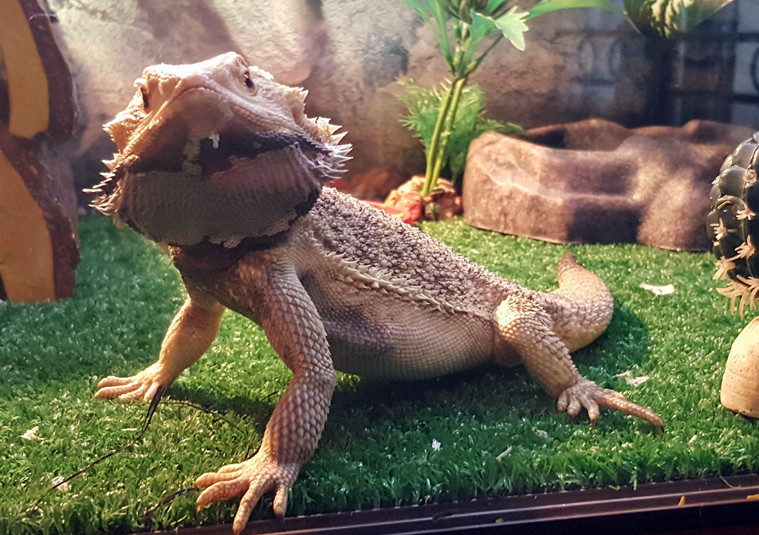The health and well-being of our bearded dragons are very important to us. The thing that we worry about the most when it comes to their care is whether they are healthy or not and how to know when they are sick. The thing about bearded dragons is they hide their illnesses to look healthy when they are not. So with this article, I made a list of signs to watch out for, as well as explained how to do a health check.
How Do I Know if My Bearded Dragon is Healthy?
Bearded dragons will be active most of the time and keep their heads up. They will also be alert when someone walks toward them or interacts with them. It is always a good idea to monitor their overall appearance from day to day to determine if they are in good health.
Bearded dragons are very good at hiding illnesses and thus need to be monitored more often to spot disease before it is too late. Other signs of a healthy bearded dragon include bright and healthy color, healthy appetite, normal everyday behavior, and so forth.
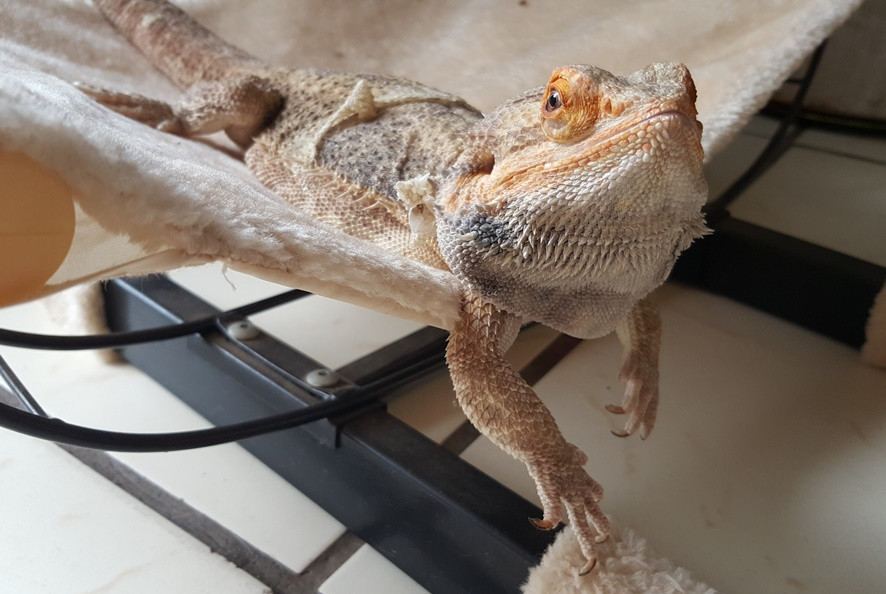
Bearded Dragon – Health Check List
Reflex Check
1. Tilt – (Can also be used to wake a dragon that is not waking up at all.)
It is done once every few months unless suspected that something is wrong.
You can check their reflexes and thus health, by placing one hand under their belly, the other hand over their back, and then gently turning your dragon over so he/she is on her back, then slowly move the hand on his/her belly away, and check if they squirm, and try to right themselves. (Do Not do this for longer than a few seconds, as it can impact their breathing.) A healthy and reflexive dragon will try and right itself as it is unnatural to be upside down. (Make sure he/she is also awake during this as some sleeping dragons do not react at all, or in other cases, this movement will actually wake them up.) If they do not move at all, once on their back, you can gently tickle their stomachs or tap their feet to see if that gets a reaction, if not, you should contact your vet ASAP!
2. Bug in front of a single eye to check eyesight.
3. Gently pull a leg, to see if they withdraw it.
4. Gently push their nose down to see if they pull it back up or move away.
Check Daily/Weekly
Eyes – Eyes should be bright, open, and alert. The pupil will grow tiny if light moves over it. Sunken or swollen (Not related to shedding) eyes indicate a problem. Also check for cloudiness in the eye or pupil, as this can indicate sight issues.
Fat pads – Pads should be prominent on the head, not sunken.
Tongue – The redder and brighter the tongue, the healthier the animal. White, yellow, or pale tongue indicates health issues, which should be attended to immediately.
Belly – The belly should not have any black stripes (Stress marks) and be soft to the touch. Press gently on the lower belly. It should be soft with no reaction from the dragon, showing pain or discomfort. If it feels as if there might be a lump, it can indicate eggs in females, excrement that needs to be expelled, or many other health issues.
Dragon color – A Beardie’s body should be a normal bright color. Dark color indicates cold or stress. Pale indicates health issues.
Tail tip – The tail tip should be the same color as the rest of the tail. A Blacktail tip may present along with a black beard in mating season, or when other dragons are present, but if the beard is normal, but the tip is black and/or stiff, it can indicate tail rot.
Beard – Black beards can and will most likely occur during mating season or when other dragons are present. If the beard is black for no apparent reason and stays that way, it may indicate pain, stress, discomfort, and thus mean issues with their health.
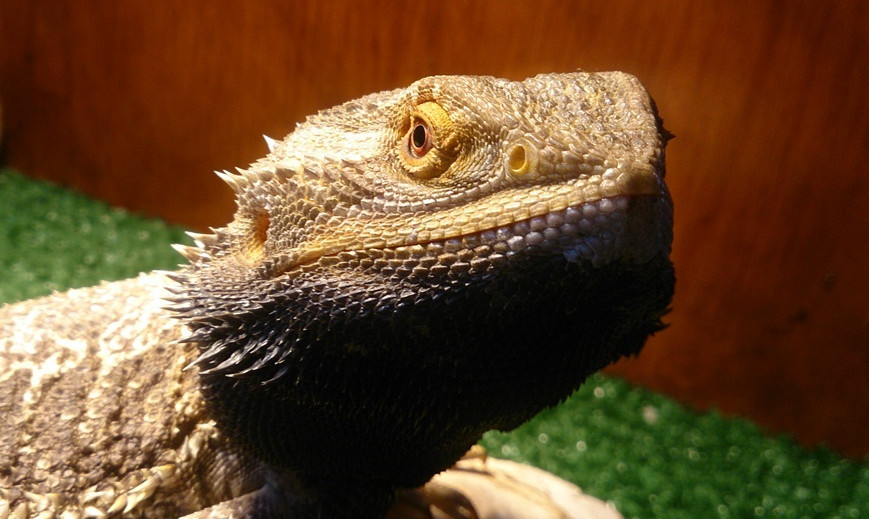
Chest – the black from a beard, may stretch down over the chest and sometimes even the belly. This once more may be a sign of mating and so on, but if accompanied by other symptoms or behaviors, seek help immediately from a vet.
Limb check – Gently move each leg, feel for bumps or swollen areas, and then gently bend the joints. If the dragon struggles and immediately pulls away, it may indicate pain and/or discomfort in that limb. Always check twice or three times, as some dragons just do not like the movement, and pull away for this reason rather than pain. You can also place them on a flat surface that is not slippery and make sure they walk normally without a limp or spasm.
Body Check – Gently run your hands over their entire body, tail and other limbs included, including feeling for bumps, lumps, and so on. Check their spines and tails, for deformities, or curvature that can indicate health issues.
Skin – Check their skin for odd patches, color, and so forth, making sure none has occurred since you last checked them, as it can indicate infections, injuries, bruises, and so forth. Gently pinch some of the loose skin around the middle of their back together. If the skin retracts, it’s normal, but if it were to stay in that position, or retract slowly, it means the dragon is getting dehydrated and is in need of some water. Read Bearded Dragon Dehydration to learn more.
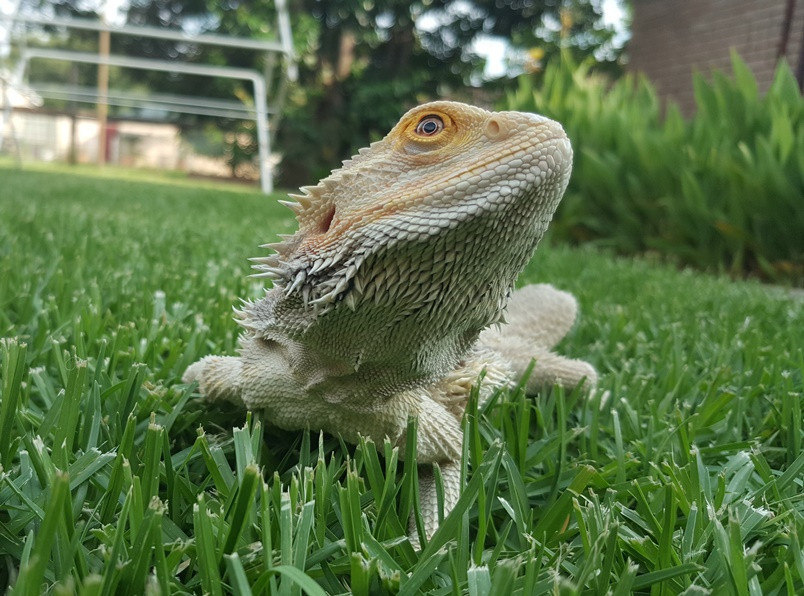
What are the Signs of Pain or Discomfort?
Please look at the following signs to help you determine if your bearded dragon is in pain or uncomfortable. Keep in mind, if your dragon, is shedding, brumating, or in the breeding season, they can also show unusual behaviors.
- Lack of usual activity
- Constant gasping
- Lethargy (constantly tired)
- Limping or struggling to move around
- Reluctance to move around or a lack in natural reflexes (if not cold)
- Unusual aggression, especially when handled.
- Hunching
- Restless/refuses to sleep at night
- Jerky movements
- No appetite, refusing food
- Swollen limbs or other parts of the body
- Sunken fat pads (the pads on the top of their heads)
- Droopiness
- Bloated
- Sunken eyes
- Stiffness (If not cold)
- Spasms when touched
- Constantly lying in a curved manner
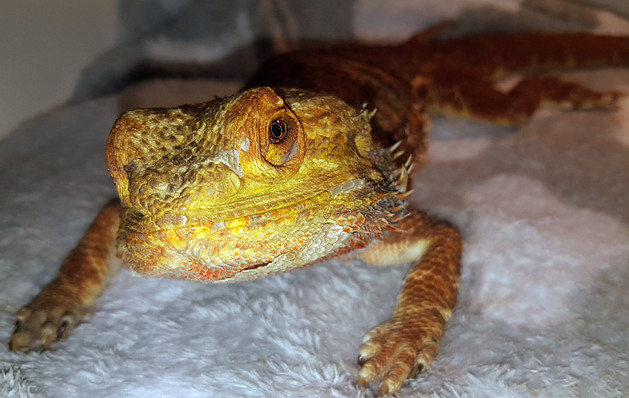
Key Symptoms that are Serious and Requires Immediate Veterinary Care!
- Sudden pale color that persists.
- Unusual fluid around the mouth.
- Pale, yellow, or white tongue
- Sunken eyes
- Swollen eyes that are not caused by shedding.
- Constant vomiting. Seek help immediately! And keep their heads down so vomit does not recede into the lungs.
- Swelling inside or around the mouth.
- Sores inside the mouth
- Trouble breathing (gasping constantly)
- Swollen beard
- Constant diarrhea
- A black beard is not caused by mating or dominance and goes along with other symptoms.
- Jerky movements
- Blood in excrement
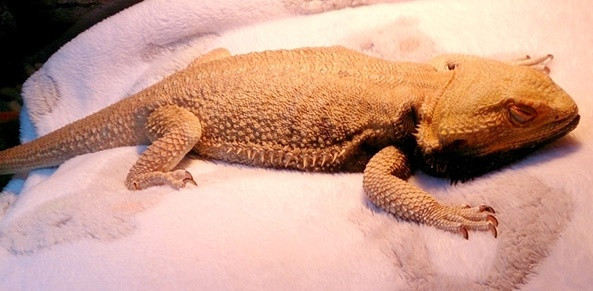
What Kind of Changes Can Be Associated with Shedding?
- Change of color. The old skin will become a whitish-grey color and look pale in the places where the shedding takes place.
- Activity levels will be different than normal.
- Appetite loss.
- Constant rubbing against objects.
What Kind of Changes Can Be Associated with Breeding Season?
- Appetite – Loss of appetite or eating infrequently.
- Change in Color – Might get darker or brighter, seldom will go pale.
- Activity will increase and a beardie might seem restless at times or have sudden bursts of energy.
- Behavioral change.
- Urine and Feces might be different than normal with a change in consistency and color
- Males develop a black beard when other dragons are insight.
Other Signs and/or Behaviors to Indicate Health
Black stripes on the belly known as stress marks – Something is causing the dragon’s stress, which needs to be fixed, as constant stress lowers their immune system.
Tail tip pointing in the air – A Sign of Happiness. A happy dragon will point their tail in the air. Keep in mind, not all dragons do this.
Lifting of toes/feet while basking – A sign that the platform on which they are basking is too hot, and burning them.
Nibbling on toes and/or tail – Sign that the dragon is hungry and not being fed enough or stressed.
Yellow patches on the skin – This could be a sign of Yellow Fungus.
Black and hard toes/tails – Sign of rot, also known as Tail rot
Wobbly on feet – Pain, discomfort, or dizziness. Do an immediate health check.
